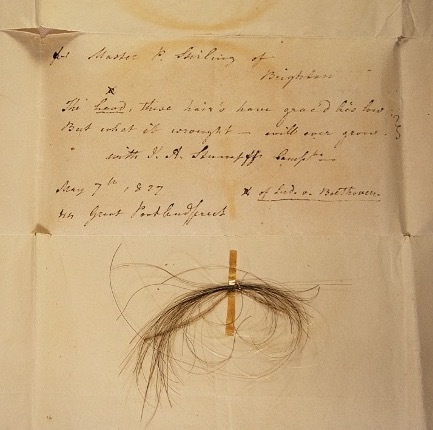Nearly 200 years after the death of the world-famous German composer Ludwig van Beethoven, his mysterious illness and the reasons behind his death are still under investigation. In March 2023, the results of the analysis of DNA samples taken from Beethoven’s hair revealed new information about the composer’s state of health.
Unraveling the Mysterious Curtain of Your Health
Beethoven was known to be functionally deaf in his mid-40s. In 2023, a team of researchers from the Max Planck Institute for Evolutionary Anthropology in Germany analyzed DNA samples from Beethoven’s hair and began to investigate the causes of his deafness and other health problems.
- Brain pacemaker offers hope in depression treatment
- Astonishing Discovery: Fossil Dinosaur with Duckbill Found in Africa!
“Our goal was to shed light on Beethoven’s health problems, including his progressive hearing loss, which began in his late 20s and led to him becoming functionally deaf in 1818,” said biochemist Johannes Krause, who led the study.
The cause of deafness remains unclear
Researchers have been unable to determine the exact cause of Beethoven’s deafness. What began in his 20s as tinnitus gradually led to a reduced tolerance for loud sounds and eventually to hearing loss at higher pitches, ending his career as a stage performer.
Liver Disease and Lead Poisoning Debate
Researchers found that Beethoven suffered from severe abdominal pains and chronic diarrhea from the age of 22, with the first signs of liver disease appearing six years before his death. It is thought that the composer’s relatively young death at the age of 56 was at least partly due to this disease.
A 2007 study suggested that lead poisoning may have hastened Beethoven’s death, even if it was not responsible for the symptoms that claimed his life. However, the latest study, published in March 2023, disproved this theory and revealed that the hair did not come from Beethoven, but from an unknown woman.
More importantly, the latest research suggests that Beethoven’s death was likely caused by a hepatitis B infection exacerbated by alcohol use and numerous risk factors for liver disease.

As for his other conditions?
“We have found no definitive reason for Beethoven’s deafness or gastrointestinal problems,” Krause said.
In some ways, we are left with more questions about the life and death of the famous classical composer. Where did he contract hepatitis? How did a lock of women’s hair remain Beethoven’s hair for centuries? And what was behind his intestinal pains and hearing loss?
An unfortunate outcome, given that the team was inspired by Beethoven’s desire for the world to understand his hearing loss. Yet there was another surprise buried in his genes.
Further research comparing the Y chromosome in hair samples with those of Beethoven’s modern paternal relatives points to a mismatch. This suggests extramarital sexual activity in the generations before the composer’s birth.
“This finding points to an out-of-pair paternity event in the paternal lineage between the conception of Hendrik van Beethoven in Kampenhout, Belgium, in about 1572 and the conception of Ludwig van Beethoven seven generations later in Bonn, Germany, in 1770,” said Tristan Begg, now a biological anthropologist at the University of Cambridge in the UK.
All of this might have been a little more than the young Beethoven could have hoped for, given the fateful request he put down on paper. He could never have imagined the secrets his friends and associates were hiding as they cut the hair from his body after that gloomy and stormy Monday night in 1827.
This research was published in Current Biology.





